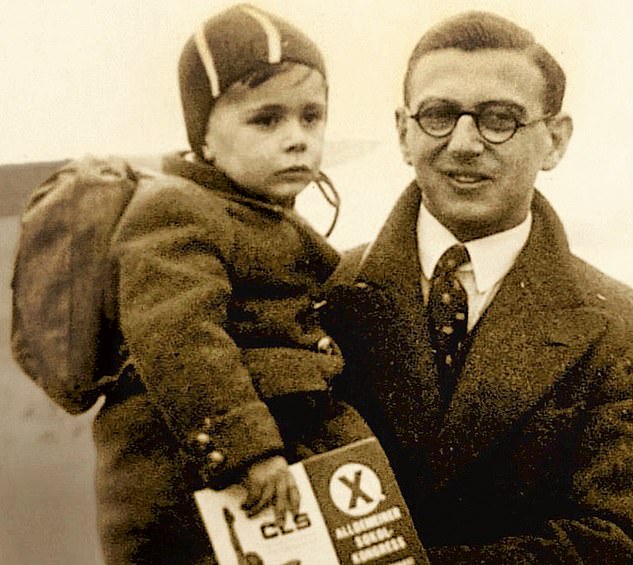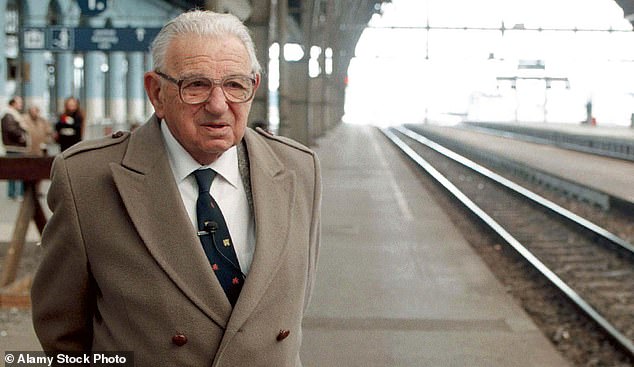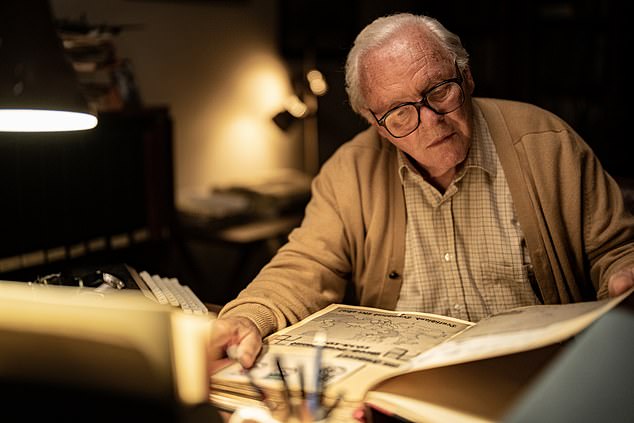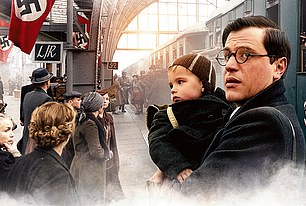Sir Nicholas Winton – The ‘British Schindler’: How on the eve of the Second World War, a quiet Home Counties stockbroker rescued hundreds of young lives from Nazi persecution
James Hawes, director of a new film about Nicky Winton, pays tribute to the man who saved the lives of thousands of children.
Nicky Winton was a 29-year-old London stockbroker in 1938. He was the child of Jewish refugees, from a family that had left Germany for England in the 1870s.
As war once again loomed over Europe, a friend alerted him to the refugee crisis in Prague, caused by Britain's signing of the Munich Agreement (which marked the German annexation of the Sudetenland in Czechoslovakia and subsequent occupation of the Sudetenland made possible by Nazi Germany).
Winton volunteered to help refugees for a week or two, but when he saw first-hand how desperate and dangerous their situation was, he decided he had to try to change things.
The children's transport trains brought Jewish children from Germany and Austria, but no refugees from Czechoslovakia were accepted, mainly because the British government did not judge that the people there were in any danger.
The children's transport program saved the lives of almost 10,000 young people

Winton in 1939, rescued from Czechoslovakia with a child.
Winton found thousands of refugees, many of them children, living in open fields and ruined buildings around Prague, facing a brutal winter and the threat of Nazi invasion.
Most were Jewish. Some were children of those who had opposed Hitler and were now in hiding. Winton was adamant that he wanted to save children 'of all faiths and none', that all lives were equal. He began raising money and negotiating with the Home Office to get the children temporary homes in Britain. And to those who told him it was impossible, he simply replied that he was determined to try.
This film project first landed in my inbox with a script and a link to a YouTube clip from the BBC That's life! program in 1988, when Winton was interviewed by Esther Rantzen.
In it she asks the gathered audience if there is anyone present who owes his life to him. One by one, each adult in the room stands up. It is a piece of TV history that goes viral several times a year.
The raw, subdued emotion of the moment when Winton becomes aware of the impact of everything he achieved decades earlier at the outbreak of war is deeply moving. I've watched it a hundred times and it still gives me goosebumps. If you haven't seen it yet, you should definitely check it out. I dare you not to cry.

Winton in 1998, at Prague Central Station
That YouTube clip is both a gift and a challenge for a director. How do you recreate such an iconic screen moment? How can you add to it – if at all? Well, casting Sir Anthony Hopkins is a good start. As he and I discussed how we would approach the film, he talked about the extraordinary humility that Winton exudes, the emotions all so controlled. No dramas. You do it because it is decent and right.
My team wanted to make it as authentic as possible, from the costumes to the details of every passport stamp and, where we could, filming scenes in the locations where the real events took place.
Early in our preparations we explored Prague, at the main station where most of the children boarded the train to England. At the end of the platform is a bronze statue of Winton with two of the children he saved. We stopped to take pictures when suddenly there were screams, radios beeping and children crying. Police escorted a crowd across the platforms. And then we realized that these were refugees; dozens of women and children, just arrived from Ukraine, dragging with them a few valuable possessions. We all stood very still to take it in.
Winton saw firsthand how desperate and dangerous the situation of child refugees was
Here we were preparing to tell a story about another war and other refugees from over 80 years ago, and history was repeating itself before us. It was a chilling moment. What would Winton have thought?
For the scenes where the children say their final goodbyes as they board the train, the original archive often features many happy faces, excited by the news camera and smiling awkwardly. I decided to refer to more contemporary sources, so I looked to photojournalism from Ukraine and recreated images of parents waving goodbye to their children in 2022: an adult's hand over a child's through the window, faces pressed against the glass. It's just a detail, but it makes the film subtly speak more about 'now'.

A new film chronicling Winton's heroic efforts and starring Sir Anthony Hopkins will hit cinemas on New Year's Day
With world news so full of conflict, it's all too easy to feel overwhelmed, to have every excuse to think that nothing you could do could make a dent in the crisis. But Winton, who died in 2015 at the age of 106, thought differently. His story is about possibilities and hope.

Johnny Flynn as young Winton A life
Does the video work? You, the audience, will be the judge of that. But the now Dame Esther Rantzen saw it and gave us her approval – and that matters personally. You see, this executive's second ever job in industry was as an intern researcher That's life!, so Esther was my boss. Now, decades later, I was allowed to direct 'her'.
Perhaps more importantly, the film was seen by both Winton's family and some of the surviving children who first arrived at Liverpool Street Station more than 84 years ago. One, Lord Dubs, wrote that he watched the film with streaming tears because this was his life story we were telling, and it dramatized the moment he left his parents at Prague station. He added that when he saw Anthony Hopkins on screen as Winton, he had to pinch himself to remember that it wasn't the real hero he was looking at.
We take that humbly.
A life can be seen in cinemas from January 1
